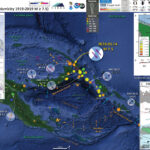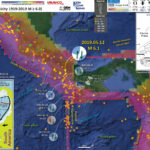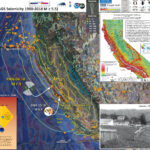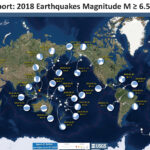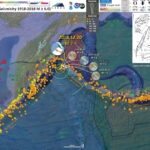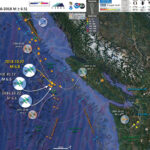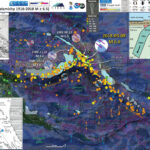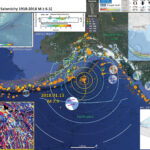This region of Earth is one of the most seismically active in the past decade plus. This morning, as I was preparing for work, I got an email notifying me of an earthquake with a magnitude M = 7.5 located…
Earthquake Report: Panamá
There was just now an earthquake beneath Panamá. The major plate boundary in the region is a subduction zone (convergent plate boundary) where the Cocos and Nazca plates dive northwards beneath the Caribbean plate forming the Middle America trench (MAT).…
18 April 1906 San Francisco Earthquake
Today is the anniversary of the 18 April 1906 San Francisco Earthquake. There are few direct observations (e.g. from seismometers or other instruments) from this earthquake, so our knowledge of how strong the ground shook during the earthquake are limited…
Earthquake Report: 2018 Summary
Here I summarize Earth’s significant seismicity for 2018. I limit this summary to earthquakes with magnitude greater than or equal to M 6.5. I am sure that there is a possibility that your favorite earthquake is not included in this…
Earthquake Report: Bering Kresla / Pacific plate
We just had a large earthquake in the region of the Bering Kresla fracture zone, a strike-slip fault system that coincides with the westernmost portion of the Aleutian trench (which is a subduction zone further to the east). At first,…
Earthquake Report: Mid Atlantic Ridge
There was a M = 6.8 earthquake along a transform fault connecting segments of the Mid Atlantic Ridge recently. (now an M 6.7) https://earthquake.usgs.gov/earthquakes/eventpage/us1000hpim/executive The Mid Atlantic Ridge is an extensional plate boundary called an oceanic spreading ridge. Oceanic crust…
Earthquake Report: Explorer plate
Last night I had completed preparing for class the next day. I was about to head to bed. I got an email from the Pacific Tsunami Warning Center notifying me that there was no risk of a tsunami due to…
Earthquake Report: Channel Islands
I was finally getting around to writing a report for the deep Bolivia earthquake (Bolivia report here), when a M 5.3 earthquake struck offshore of the channel islands (south of Santa Cruz Island, west of Los Angeles). As is typical…
Earthquake Report: New Ireland!
We had an M 6.8 earthquake near a transform micro-plate boundary fault system north of New Ireland, Papua New Guinea today. Here is the USGS website for this earthquake. The main transform fault (Weitin fault) is ~40 km to the…
Earthquake Report: Gulf of Alaska!
I was asleep in bed, trying to catch up to prevent myself from getting ill, when there was a large earthquake in the Gulf of Alaska (GA), offshore of Kodiak, Alaska. When I wakened, I noticed a fb message from…
